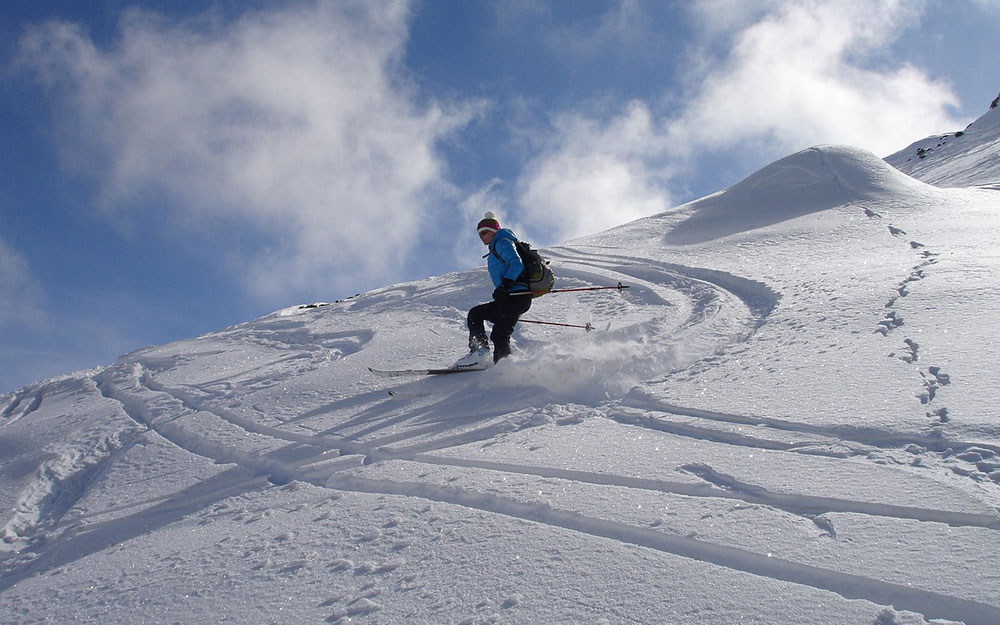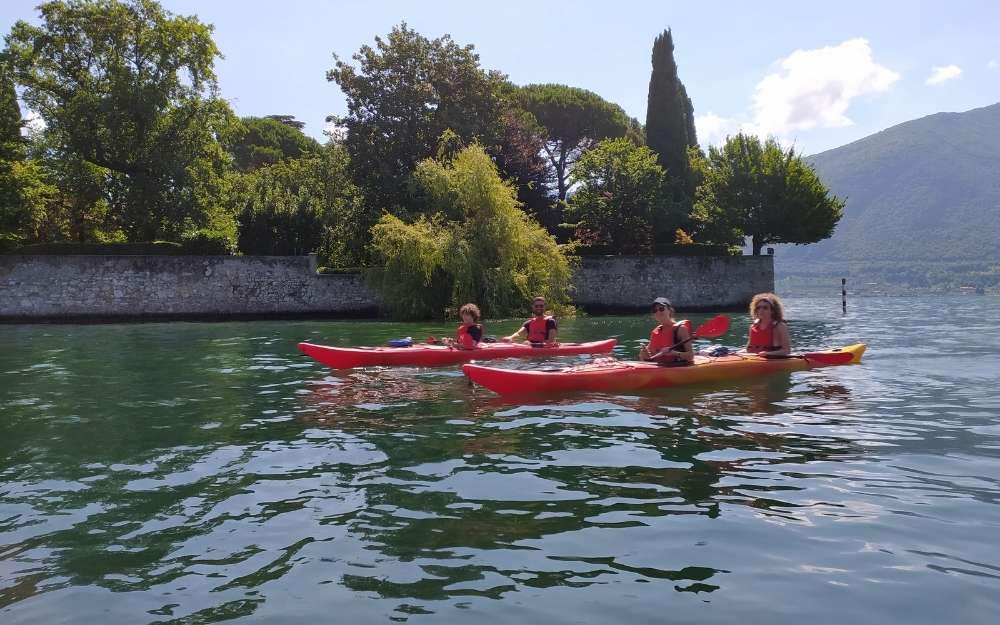In this article, we describe one of our favorite activities, as well as one of the most enjoyable… rafting!
- What is Rafting?
- Where is it Practiced in Italy?
- Who Can Participate?
- What’s Needed for Rafting?
- Why Choose BergamoXP?
What is Rafting?
Rafting is a sport that originated in the United States and involves descending a river in special unsinkable and self-bailing inflatables called rafts. The size and number of raft crew members vary based on the river’s flow and volume. Recently, single-seat rafts known as pack-rafts have also gained popularity.
The raft is led by a qualified and certified person called a guide, who controls the raft’s direction with a paddle and gives maneuvering commands to the crew.
The descent takes place on rivers that can vary significantly in flow and gradient, and the difficulty is summarized on a scale ranging from I to V, indicating increasing levels of difficulty.
Rafting is an ideal sport to experience strong emotions, teamwork, and provides unique views and new perspectives of the river and surrounding nature!

Where is Rafting Practiced in Italy?
In Italy, rafting is practiced from North to South. Each region’s terrain and climate influence the type of descent and the season in which it can be practiced.

One of the most well-known locations is Val di Sole in Trentino, on the Noce river. The Noce is a class III-IV river that offers intense experiences to the crews that descend it.
Being primarily snow-glacial, the rafting season runs approximately from May when the snow begins to melt, to the end of September when the first cold temperatures prevent glacier melt.
For those seeking more intense experiences, a rafting descent on the Dora Baltea river in Valle d’Aosta is a must.
This river is also primarily snow-glacial, and the rafting season here extends from May to September. However, the gradients and technical difficulties increase to class IV with some sections rated as class V.


Another Northern Italy classic is the Sesia river in Piedmont’s eponymous valley.
In this case, the river’s main section is classified as class III (IV), and it’s primarily snow-rain fed. Due to this, the rafting season is shorter compared to other rivers previously described, and the difficulties are less pronounced.
In the Veneto region, the Brenta river in Val Sugana stands out.
Being fed by upstream reservoirs, the river’s flow is regulated ensuring consistent water levels, making it possible to practice rafting almost all year round. The Brenta is a wide river with gentle gradients and its difficulties are classified as class II-III.


Moving down the peninsula, the Nera river in Umbria is quite notable.
The river stretch for rafting descents is downstream from the famous Marmore Waterfalls, and the water flow is tightly controlled. This guarantees consistent levels and flow at specific times throughout the year. The Nera is a narrow river that gets literally flooded due to the waterfall release, providing high water speed. With a class III-IV difficulty, the excitement is always assured.
Heading further South, the Lao river, a gem of Calabria, deserves a mention.
This river runs through an exceptional natural setting with narrow gorges. Its karstic nature ensures a year-round flow that surprisingly increases in winter. The difficulty varies greatly with the season and water volume, ranging from class II-III in summer to class III-IV in winter.


Coming to our region, Lombardy, the Adda river cannot go unnoticed, especially in its upper section in Valtellina.
This snow-glacial river is classified as class III. While it doesn’t have steep gradients, it carries a large volume of water with good speed. The rafting season typically runs from May to the end of September.
Lastly, the route we offer at BergamoXP is a stretch of the Brembo river in the middle Val Brembana, from San Giovanni Bianco to San Pellegrino Terme, a renowned thermal resort and Art Nouveau gem of the valley. The Brembo river is snow-rain fed and classified as class II-III. For this reason, the season for practicing this activity is spring when snowmelt guarantees the necessary water flow for rafting. The Brembo features rapids with significant gradients, ensuring immediate fun, followed by more tranquil sections where you can experience activities with even more river contact, such as swimming and floating!

Who Can Participate?
In general, anyone can practice rafting. As seen in this article, the difficulties can vary significantly from river to river. However, as a general rule, no specific technical skills are required. All you need is a willingness to have fun, a bit of adventurous spirit, and adaptability!
What’s Needed for Rafting?
Of course, the essential requirement for rafting is water, the presence of which varies greatly from river to river, as detailed in this article, and it dictates the season. For this reason, bad weather is rarely a hindrance or obstacle to the activity (unless heavy rain significantly swells the river and makes it unfeasible).
As for the necessary technical equipment, each rafting center typically provides each crew member with a wetsuit, neoprene booties, a waterproof jacket for thermal protection, a helmet, a buoyancy aid, and of course, a paddle. Participants are usually asked to bring their personal undergarments: a synthetic shirt (absolutely no cotton, as it remains wet and cools the body), a swimsuit, and a pair of athletic shoes. Remember, you’ll be getting wet during rafting, always!

Why Choose BergamoXP?
We have been offering Rafting on the Brembo River for many years. This river is our home, and we know every twist and turn. When we’re not rafting, you’ll find us on the Brembo waters with our kayaks. Our guides, all certified and experienced, are ready to ensure you have a safe and enjoyable river adventure!
To book, simply check out the dedicated activity page on our website.















